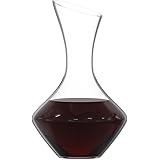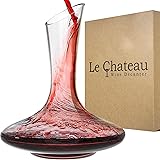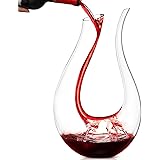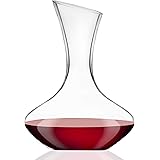Have you ever held a glass of wine, perhaps an Argentinian Malbec, and found yourself wondering about the journey from grape to glass? The world of wine, with its intricate details and diverse regions, can sometimes feel like a complex puzzle. Thankfully, resources like the video above, featuring Jimmy Smith, are invaluable guides, especially for those delving deeper into wine education, perhaps for WSET examinations. This comprehensive article aims to expand on the insights from the video, focusing on Argentina’s signature grapes – Malbec and Torrontés – and providing a clearer understanding of what makes these wines so unique.
Argentina’s Signature Grapes: A Deep Dive into Malbec
When one thinks of Malbec Argentina, images of vibrant red wines often come to mind. Originally from Southwest France, Malbec has truly found its spiritual home and arguably its greatest expression in Argentina. The country boasts the largest global plantings of this versatile grape, securing its flagship status in the international wine market. Many people associate Malbec exclusively with Argentina, a testament to its widespread success and recognition.
Malbec typically produces deeply colored, full-bodied wines, often brimming with enticing black fruit flavors like blackberry and plum. These wines commonly feature high levels of ripe, smooth tannins, which provide structure and a pleasant mouthfeel. Imagine biting into a perfectly ripe plum; that’s the kind of fruit intensity you can expect. However, modern winemaking trends are also embracing a more elegant approach. Some winemakers are now working to extract less intensively during the process, resulting in lighter, more delicate expressions of this classic Argentine wine.
The Art of Malbec Aging and Oak Influence
A significant portion of high-quality Malbecs undergo maturation in oak barrels. This can involve new oak, old oak, or a combination of both. Oak aging plays a crucial role in shaping the wine’s character. It allows for a gradual introduction of oxygen, which softens the tannins, making the wine feel smoother on the palate. Furthermore, oak imparts a range of subtle spicy characteristics, reminiscent of vanilla, clove, or nutmeg, adding layers of complexity to the final product. This process transforms a powerful young wine into a more integrated and sophisticated beverage.
Altitude: The Secret Ingredient for Diverse Malbec Styles
Argentinian producers grow Malbec extensively across nearly every wine region, making it practically ubiquitous throughout the country. This widespread cultivation, combined with vast differences in climate, topography, and geology, leads to an incredible diversity of Malbec styles. Altitude, in particular, emerges as a pivotal factor influencing the character of the wine. It acts like a dimmer switch, fine-tuning the grape’s development and expression.
Lower altitude vineyards, typically found around 600-800 meters in areas like Mendoza city, generally produce fuller-bodied wines. These tend to showcase richer black fruit flavors, offering a robust and opulent experience. In contrast, Malbecs from higher altitudes, soaring from 900 meters to well over 1100 meters, exhibit a distinct elegance and freshness. These wines often possess delicate floral compounds, higher acidity, and a vibrant character, alongside potentially higher tannin levels. The cooler temperatures at elevation slow down ripening, allowing grapes to develop more nuanced flavors and retain refreshing acidity, much like mountain spring water compared to a warm lowland stream.
Beyond being a star as a varietal wine, Malbec also plays a leading role in premium blends. It frequently contributes its depth and fruitiness to wines featuring Cabernet Sauvignon, Merlot, Cabernet Franc, and Petit Verdot. These blends often create more complex and age-worthy Argentine wines, combining the best attributes of several grape varieties.
Exploring Other Important Argentine Grape Varieties
Bonarda: The Secondary Black Grape of Note
While Malbec holds the spotlight, Bonarda stands as Argentina’s second most planted black grape variety. It is a late-ripening grape known for producing deeply colored wines with naturally high levels of acid and tannin. Sometimes, these tannins are described as “rustic,” meaning they can be a bit grippy, drying, or even astringent if not managed properly. Think of the difference between biting into a ripe apple versus an unripe one – the unripe apple has a much more astringent feel. When grown with very high yields, Bonarda yields easy-drinking wines bursting with brambly fruit notes like raspberry and blackberry, displaying medium to deep color. However, when winemakers control the yields, the fruit can ripen more fully, leading to wines with improved concentration, structure, and a smoother texture. Most Bonarda fruit originates from Mendoza, with additional plantings found just north in San Juan.
Argentina also cultivates a range of international black grape varieties. Cabernet Sauvignon, Syrah (Shiraz), and Merlot are widely planted, producing wines of good character and ripe concentration, often with a hint of toasty oak from barrel aging. Smaller amounts of Tempranillo and Pinot Noir further diversify the country’s red wine offerings, catering to a broad spectrum of tastes.
Torrontés: Argentina’s Aromatic White Signature
Shifting our focus to white wines, Torrontés is undoubtedly the principal signature white grape variety of Argentina. This aromatic grape is widely planted across several regions, including Salta (especially Cafayate), La Rioja, San Juan, and Mendoza. Many of the finest examples of Torrontés hail from the high-altitude zones in the northern reaches of the country, particularly within the Salta province, around the picturesque town of Cafayate. These high-altitude vineyards provide the ideal conditions for Torrontés to express its vibrant aromatics and crisp acidity.
Most Torrontés wines captivate with their fruity, floral perfume, offering notes of stone fruits like peach and apricot, complemented by melon and a distinctive aromatic lift. They typically exhibit a medium body and medium acidity. The best examples, particularly from Salta, are remarkably fresh and expressive. Conversely, Torrontés from lower altitude zones may present as less fresh, with higher alcohol levels and a less pronounced aromatic profile. The aromatic nature of Torrontés dictates specific winemaking practices, similar to those used for Sauvignon Blanc or Riesling. To preserve its delicate aromas and freshness, it is typically fermented in inert, temperature-controlled vessels (like stainless steel tanks) and released from the winery quickly. This rapid bottling ensures that the lovely fruity and floral characteristics are captured and delivered fresh to your glass.
Other White Grape Varieties in Argentina
Beyond Torrontés, Argentina’s vineyards are home to other white grape varieties contributing to its diverse wine landscape. Chardonnay is extensively planted and crafted into a wide array of styles, often benefiting from oak aging, sometimes incorporating a proportion of new oak barrels. You can also find delightful examples of Chenin Blanc, Sauvignon Blanc, Semillon, and Viognier, each contributing their unique characteristics to the country’s white wine portfolio.
A notable traditional variety is Pedro Ximénez, distinct from its Spanish counterpart, which is historically used for less important, often cheaper wines intended for the domestic market. Despite its traditional role, there are significant plantations of Pedro Ximénez, and some modern, natural wine producers are now crafting intriguing skin-contact expressions from this grape. Skin contact, a technique more commonly associated with red wine production, involves allowing the grape skins to remain in contact with the juice during fermentation, adding texture, color, and aromatic complexity to white wines, creating truly unique and memorable WSET Argentina examples.







